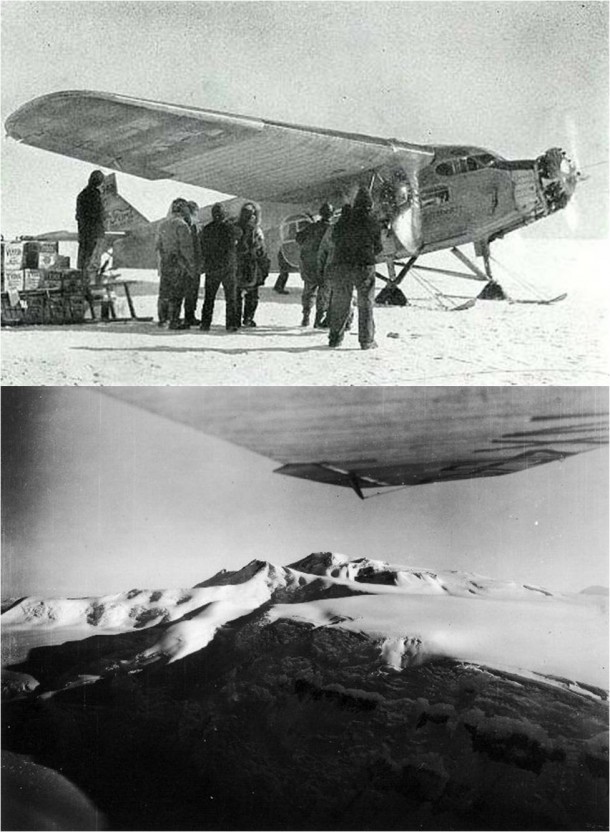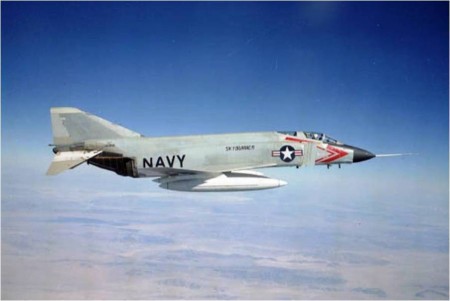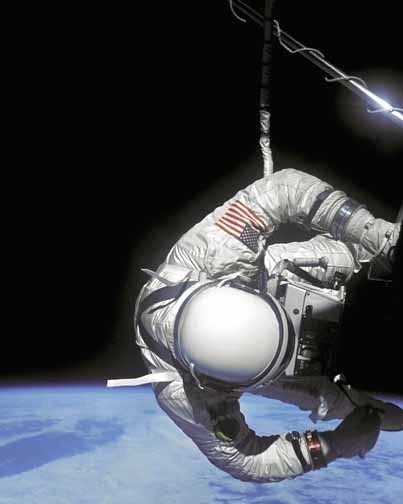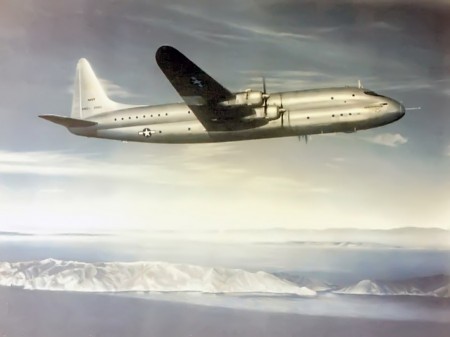
Eighty-four years ago this week, a four-man crew became the first Antarctic explorers to fly over the Earth’s South Pole. The aircraft used to make the historic flight was a Ford Trimotor.
While substantial exploration of the Artic and Antarctic by land and sea had occurred far earlier, exploration of these regions by air was in its infancy during the decade of the 1920′s. Of particular focus was the goal to fly over both the North and South Poles.
The historic first flight to the South Pole originated from Little America, an exploration base camp situated on Antartica’s Ross Ice Shelf. Distance to the South Pole was about 800 miles as the crow flies.
A Ford Trimotor aircraft, the Floyd Bennett (S/N NX4542), was selected for the epic polar air journey. The crew consisted of pilot Bernt Balchen, co-pilot Harold June, navigator Richard E. Byrd, and radio operator Ashley McKinley.
The fabled Trimotor was well-suited for the rigors of polar flight. The all-metal aircraft measured 50-feet in length and had a wing span of 76-feet. Empty weight was roughly 6,500 pounds. Power was provided by a single 520-HP Wright Cylone and a pair of 200-HP Wright Whirlwind radial engines.
Following departure from Little America at 02:39 UTC, the Floyd Bennettheaded for the South Pole. Navigation was via sun compass due to the proximity of the South Magnetic Pole.
Myriad glaciers, massifs, plateaus, and crevasses marked the stark, rugged landscape unfolding under the Floyd Bennett’s flight path. The most imposing of these geological features were the Queen Maud Mountains that towered more than 11,000 feet above sea level.
Pilot Balchen struggled to get his aircraft over the high mountain pass that runs between Mounts Fridtjof and Fisher. The crew jettisoned empty fuel cans and hundreds of pounds of precious food to lighten the load. The Floyd Bennett cleared the terrain by about 600 feet.
Just after 1200 UTC (local midnight) on Friday, 29 November 1929, theFloyd Bennett and her crew flew over the Earth’s South Pole. After briefly loitering around the Pole, the aircraft headed back to Little America at 1225 UTC.
According to plan, Balchen landed the airplane to take on 200 gallons of fuel that had been pre-positioned at the base of the Liv Glacier. TheFloyd Bennett took-off again and landed back at Little America around 21:10 UTC. Total mission time was nearly 19 hours.
United States Navy Commander Richard E. Byrd now had flown over both poles. He would go on to successfully explore the Antarctic for many more years. For his part in the South Pole overflight, Byrd was promoted to the rank of Rear Admiral.
Today, the aircraft that made the first flight over the South Pole in November 1929 is displayed in the Heroes of the Sky exhibit at the Henry Ford Museum in Dearborn, Michigan.fixed-wing aircraft ever operated by the United States Navy.

Fifty-two years ago this month, a United States Navy YF4H-1 Phantom II set a world absolute speed record of 1,606.342 mph. Piloting the aircraft for this record flight was United States Marine Corps Lieutenant Colonel Robert B. Robinson.
The McDonnell Douglas YF4H-1 Phantom II was first flown in May 1958. The aircraft measured 58 feet length with a wing span of 38 feet. Gross take-off weight was 44,000 pounds. A pair of General Electric J79-GE-8 turbojets produced a total of 34,000 pounds of thrust in afterburner.
The YF4H-1 was the first in a long line of Phantom II variants that would eventually see a production run of 5,195 aircraft. Second only to the nearly 10,000 production units of the multi-variant North American F-86 Sabre.
Since 1961 marked the 50th anniversary of Naval Aviation, the US Navy planned to celebrate by establishing a series of speed records. The aircraft of choice was their super-powered Phantom II. Operation SAGEBURNER was the low altitude speed program (i.e., 125 feet off the deck) while Operation SKYBURNER was the high altitude speed component.
On Wednesday, 22 November 1961, the second YF4H-1 (S/N 142260) took-off from Edwards Air Force Base, California in an attempt to surpass the existing world absolute speed record. A United States Air Force F-106 Delta Dart, piloted by Major Joseph W. Rogers, held the existing record of 1,525.96 mph which was set on Tuesday, 15 December 1959.
Robinson had to fly a precisely-timed and positioned flight profile to extract maximum performance from his YF4H-1. FAI rules required the aircraft to enter the Edwards speed course in level flight and to make two runs. The final speed mark would be the average of the two runs.
The Phantom II was a big airplane and had to carry a lot of fuel. In addition to a full internal fuel load, the aircraft carried a 600-gallon centerline tank and a pair of 370-gallon wing tanks. Following take-off to the east, climb-out was made to the south toward El Centro, California. Arriving in the area, Robinson made a sweeping left-hand turn over the Salton Sea and accelerated the aircraft north back towards Edwards.
As the aircraft gained speed, Robinson dropped the empty centerline fuel tank over the Chocolate Mountains gunnery range. Then, arriving over the Bristol Dry Lake range, he punched-off the empty wing tanks. The aircraft was now lighter and aerodynamically cleaner.
Robinson approached the Edwards speed course from the east in full afterburner. The Phantom II exited the 20-mile course quickly. Following his first pass, Robinson came out of afterburner, made a Mach 0.9 turn to the south, cruised 105 miles out and then made the turn back to Edwards for the second speed pass.
His aircraft lighter now and not having to concern himself with the logistics of dropping empty fuel tanks, Robinson was clocked at over 1,700 mph on his second time through the Edwards speed course. The two-run average was 1,606.342 mph; a new world absolute speed record.
The F-4 Phantom II would go on to a legendary combat career in both the United States Navy and United States Air Force. Among many distinctions, the McDonnel Douglas F-4 Phantom II is the only aircraft to have seen service with both the USAF Thunderbirds (1969-1973) and the US Navy Blue Angels (1969-1974) flight demonstration squadrons.
For setting the world absolute speed record in 1961, Operation SKYBURNER pilot Bob Robinson was presented with the Distinguished Flying Cross by the then-Secretary of the Navy, John B. Connally.

Forty-seven years ago this month, NASA’s pioneering spaceflight program, Project Gemini, was brought to a successful conclusion with the 4-day flight of Gemini XII. Remarkably, the mission was the tenth Gemini flight in 20 months.
Boosted to Earth orbit by a two-stage Titan II launch vehicle, Gemini XII Command Pilot James A. Lovell, Jr. and Pilot Edwin E. “Buzz” Aldrin, Jr. lifted-off from Cape Canaveral’s LC-19 at 20:46:33 UTC on Friday, 11 November 1966. The flight was Lovell’s second trip into space and Aldrin’s first.
Like almost every Gemini mission before it, Gemini XII was not a glitch-free spaceflight. For instance, when the spacecraft’s rendezvous radar began acting oddly, the crew had to resort to sextant and chart to complete the last 65 nautical miles of the rendezvous with their Agena Target Vehicle. But, overcoming this and other obstacles served to provide the experience and instill the confidence needed to meet the truly daunting challenge that lay ahead; landing on the Moon.
Unquestionably, Gemini XII’s single most important contribution to the United States manned space effort was validating the notion that a well-trained astronaut could indeed do useful work in an Extra-Vehicular Activity (EVA) environment. The exhausting and even dangerous EVA experiences of Gene Cernan on Gemini IX and Dick Gordon on Gemini XI brought into sharp focus the challenge of performing even seemingly simple work assignments outside the Gemini spacecraft.
Buzz Aldrin performed a trio of EVA’s on Gemini XII. Two of these involved standing in his seat with the hatch open. The third involved a tethered EVA or space walk. On the latter, Aldrin successfully moved about the exterior of the Gemini-Agena combination without exhausting himself. He also used a special-purpose torque wrench to perform a number of important work tasks. Central to Aldrin’s success was the use of foot restraints and auxiliary tethers to anchor his body while floating in a weightless state.
Where others had struggled and not been able to accomplish mission EVA goals, Buzz Aldrin came off conqueror. One of the chief reasons for his success was effective pre-flight training. A pivotal aspect of this training was to practice EVA tasks underwater as a unique means of simulating the effects of weightlessness. This approach was found to be so useful that it has been used ever since to train American EVA astronauts.
Lovell and Aldrin did many more things during their highly-compressed 4-day spaceflight in November of 1966. Multiple dockings with the Agena, Gemini spacecraft maneuvering, tethered stationkeeping exercises, fourteen scientific experiments, and photographing a total eclipse occupied their time aloft.
On Tuesday, 15 November 1966, on their 59th orbit, a tired, but triumphant Gemini XII crew returned to Earth. The associated reentry flight profile was automated; that is, totally controlled by computer. Yet another first and vital accomplishment for Project Gemini. Splashdown was in the West Atlantic at 19:21:04 UTC.
While Gemini would fly no more, both Lovell and Aldrin certainly would. In fact, both men would play prominent roles in several historic flights to the Moon. Jim Lovell flew on Apollo 8 in December 1968 and Apollo 13 in April 1970. And of course, Buzz Aldrin would walk on the Moon at Mare Tranquilitatis in July 1969 as the Lunar Module Pilot for Apollo 11.

Sixty-seven years ago this week, the USN/Lockheed XR6O-1 Constitution prototype transport/commercial airliner took to the air for the first time. Lockheed test pilots Joe Towle and Tony LeVier were at the controls of the ponderous, propeller-driven aircraft.
The Lockheed XR6O-1 Constitution was a joint development of the Lockheed Company, the United States Navy, and Pan American Airways. The Navy’s interest in the aircraft stemmed from the type’s potential to carry a large amount of military cargo overseas. Pan Am envisioned utilization of the aircraft as a commericial airliner.
The XR6O-1 was a good sized airplane. It measured 156 feet in length and had a wingspan of 189 feet. With a wing area of 3,610 square feet, the mammoth bird featured a maximum take-off weight of 184,000 lbs with an empty weight of 160,000 lbs. In the commercial airliner role, the aircraft had the capacity to carry 168 passengers.
The Constitution was originally powered by a quartet of Pratt and Whitney R-4360-187 radial engines rated at 3,000 horespower each. However, early flight tests revelaed that the aircraft was underpowered. As a result, the original powerplants were replaced with Pratt and Whitney R-4360-22 radials rated at 3,500 horsepower each.
The XR6O-1 had a maximum range in excess of 4,600 nm and a service ceiling of 28,600 feet. Cruise speed and maximum speed were 260 mph and 303 mph, respectively. Due to its large size and weight, the aircraft had a climb rate of only 700 feet per minute.
Only a pair of XR6O-1 Constitution aircraft were built and flown by Lockheed. Ship No. 1 received Bureau Number 85163 while that of Ship No. 2 was 85164. The fuselage of these aircraft was essentially a double cylinder with a cross-sectional shape that resembled a figure eight. This design was chosen to increase the type’s volumetric efficiency.
XR6O-1, Ship No. 1, made its first flight on Saturday, 09 November 1946. The aircraft took-off from Burbank, California destined for Muroc Army Airfield in the Mojave Desert. The flight to the remote experimental flight test base was entirely nominal and the aircraft landed uneventfully. Ship No. 2 later joined it stablemate in June of 1948
History records that the XR6O-1 was only of marginal use to the Navy. While both aircraft made numerous transcontinental and transoceanic flights, they were underpowered and failed to satisfy performance requirements. As a result, Pan Am’s plans to employ the Constitution as an airliner failed to materialize.
The Navy retired both XR6O-1 aircraft in 1953 after unsuccessfully trying to entice commercial airline companies to purchase them. Not to be deterred, Lockheed later tried to sell industry on several airliner concepts that were essentially a repackaging of the Constitution’s basic design. No soap.
Neither XR6O-1 aircraft exists today as both ended up in the scrap yard. However, the difficult lessons-learned in their design and operation were later used to produce more capable aircraft such as the Lockheed C-130 Hercules, C-141 Starlifter, and ultimately the colossal C-5 Galaxy.
Interestingly, the Lockheed XR6O-1 Constitution remains the largest fixed-wing aircraft ever operated by the United States Navy.




